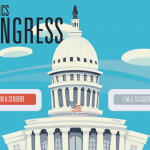While at iCivics, I contributed to three winning proposals (and one declined proposal) to the U.S. Department of Education’s Small Business Innovation Research Program – two phase I proofs-of-concept and one Phase II buildout:
- GoCivics Mock Trial
- iCivics+: Games and Games-Based Assessments to Prepare Students for Better Citizenship
- Go Games Civics: Meeting Common Core Standards With Tablet-Enhanced Multiplayer Role Play Games
Dan White, then-CEO of grant recipient and iCivics partner Filament Games, has written up 11 tips on winning SBIR funding. Here’s the lede:
Compared to VC money, SBIR (Small Business Innovation Research) funding comes with relatively few strings attached. Most importantly: you don’t have to give up any equity. So what’s the catch? I’m glad you asked! One, the funding rate is low (typically ~15%), and two, the application process will make you cry and beg for mercy. Before applying for an SBIR, steel yourself to write dozens of pages of argumentative text in answer to an extensive list of intimidating questions, buried within a dense application that’s riddled with esoteric rules.
SBIR Funding: Dreadfully Wonderful (Gamasutra)
With memories of this process still somewhat fresh (I recall our team staying up to 3am to “finish” the Phase I proposals, then barely making the deadline due to a Presidential motorcade between us and the office), I can certainly underline the following points by Dan:
- Get to know the program officers. They want to see good projects succeed and will help you navigate the grant’s quirks.
- Line up your partners early, and make sure to get their letters of support as far in advance as possible! Nothing is more frustrating — for you or your partners — then to get a letter after the proposal deadline.
- Every line of revenue is an investment. If you’re already familiar with government funding, the SBIR process will be old hat (and you’ll already be aware that each grant program has its own quirks). If not, consider whether you can sustain another type of funding, which includes not only applying for but also following through and reporting on your results.
Despite all these caveats, the federal government’s SBIR programs can be a great funding source if your project fits their profile. As you can see from the evolving names of our successful projects, they get that innovation requires iteration.
By the way, here’s the video supporting one of the Phase II proposals. If you follow Dan’s advice and develop a Minimum Viable Product, be sure to provide something — like a video — explaining it to the reviewers: Filament Games GoCivics.
